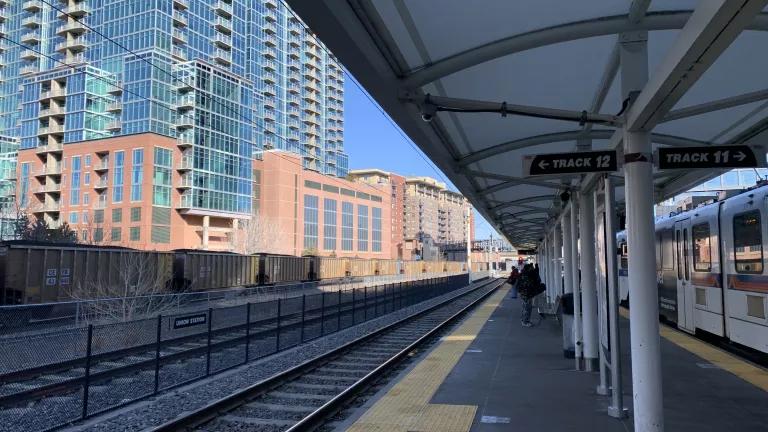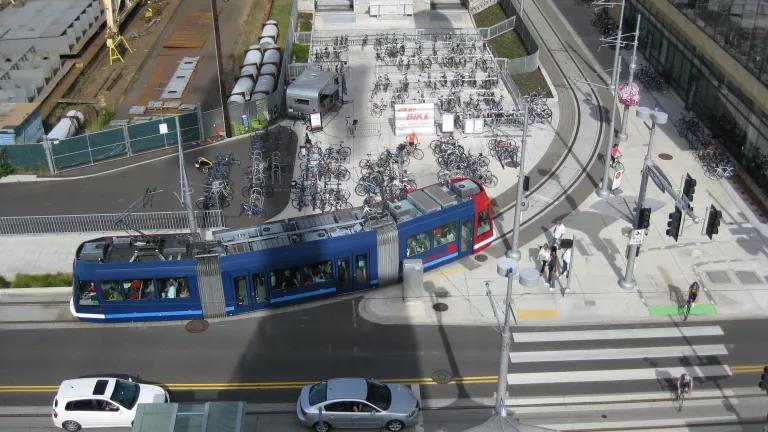Earth Day Should Be Called "People of Earth" Day

Earth Day—a time to consider the planet, yes, but also the people who must inhabit it.
You might think of the rainforest or the endangered polar bear on this day, but Earth Day is a commemoration with decidedly American roots, born in 1970 with marches and rallies by 20 million people nationwide.
It was a time of activism on behalf of civil rights and the environment and it came just two years after the passage of the Fair Housing Act to ban discrimination in housing, and five years after the creation of the federal Department of Housing and Urban Development (HUD).
As we celebrate Earth Day 2017 47 years later, we face potentially devastating cuts in HUD’s budget under the Trump administration—a predicted more than $6 billion in total in programs that fund city revitalization, support weather-related recovery and resiliency, deliver meals to the elderly and disabled, and help businesses, parks and libraries.
HUD in the cross hairs
HUD has had a long and difficult history—one that mirrors our country’s own in understanding the struggles of African-Americans and others who were historically denied equal rights under the law. Today, HUD stands as a lifeline for those who have long been underserved and deprived of opportunity.
But it’s more than that. HUD is part of the national us, the collective populace that benefits from our unique and renowned method of governing based on our American ideals of justice and equality. HUD’s programs touch virtually all of us whether we know it or not.
And, we wonder if these harsh cuts are designed to render the agency, now headed by Ben Carson, so ineffective its humanitarian mission will cease. That’s as big a mistake as thinking civil rights are no longer an issue, and we will fight such a cynical approach to so-called fiscal responsibility however needed and however long is required.
Under what we know so far about President Trump’s budget, all monies would be eliminated for the long-standing Community Development Block Grant (CDBG) program, which has funded projects large and small, from a bike and pedestrian corridor in New Orleans that has sparked community revitalization to sidewalk repairs, economic development, youth recreational and educational services, senior services, parks and playgrounds, and public safety improvements in cities and towns across America. It is these smaller jurisdictions, in fact—the ones overwhelmingly for Trump’s election as president—that will suffer most because they don’t have the funds to replace those being taken away. Citizens, we’ve learned, are letting their city councils know their feelings about that potential development.
Other proposed cuts include:
- Funding for public housing repairs by $1.3 billion or 68 percent.
- A $1.8 billion allocation for Housing Choice Vouchers, including inflationary costs. This is equal to 200,000 vouchers being lost.
- Funding that would mean the loss of about 12,000 homes for seniors and 6,000 homes for people with disabilities.
- Funding for Native Americans, who have some of the worst housing needs in America, by 25 percent or $150 million.
- Eliminating the Home Investment Partnerships Program (HOME).
- Eliminating the Choice Neighborhoods program.
- Eliminating the Self-help Homeownership Opportunity Program (SHOP).
Spending on programs saves money long-term
It seems like an easy, and even prudent, fix to the government’s money problems to cut federal programs. But as Enterprise Community Partners recently pointed out, HUD creates jobs and builds infrastructure—top tenets of Trump’s agenda—so why gut it? (Enterprise is one of our partners in the Strong, Prosperous, And Resilient Communities Challenge, which keeps equity at the forefront in community revitalization.)
These aren’t government handouts with no accountability for where the money goes or what it accomplishes. The truth is that these programs save government money in the long run, and we know that because those who receive funding or grants are required to closely track their progress. For CDBGs alone, each dollar is reported to leverage another $3.60 in support.
Without this funding we can expect those who find themselves in the most vulnerable positions in our country to become even more vulnerable—children, victims of spousal abuse, single parents, the elderly and disabled.
Without the ability to weatherize often old and substandard housing, trips to the emergency room for asthma, pneumonia and other health problems will increase—as will overall costs. Any new housing could be relegated to the cheapest land, which often means areas that have been devalued because of environmental toxics and pollutants from previous commercial development or because they’re near carbon-spewing highways.
Environmental rights are human rights
As our president, Rhea Suh, says, as an environmental organization, we take the stand that environmental rights are human rights. At Urban Solutions, we work to make sure all communities have access to clean air and water, green and equitable infrastructure, and opportunity through sustainable transportation and housing, particularly for those that face disproportionate climate effects such as high pollutants, contamination and flooding. Such environmental concerns as energy-efficiency and climate resiliency were once among HUD’s priorities, too.
As a country, everyone fails if only certain neighborhoods get investment and support. As I’ve said before, if your ZIP code is more important than your genetic code for your health and prosperity, that’s a problem.
We’ve heard Secretary Carson say some housing funding will be included in the president’s infrastructure bill, and that’s an important gesture, but direct government investment is still needed. Private financing isn’t going to be enough to solve the problems these affected households face.
During my time at HUD launching the Office of Sustainable Housing and Communities under the Obama administration, many of these programs were already cut to the bone. Cutting them another 13 percent as predicted under the Trump plan will either put people on the street or relegate them to horribly substandard living conditions.
Those of us who are celebrating today should reflect on how the environmental movement goes forth and what it means to put in practice the idea of putting people at the center of our work.




